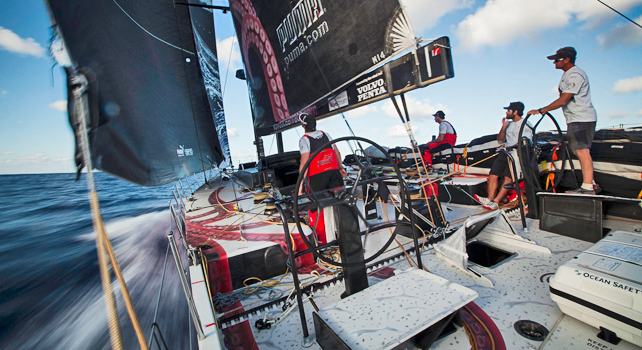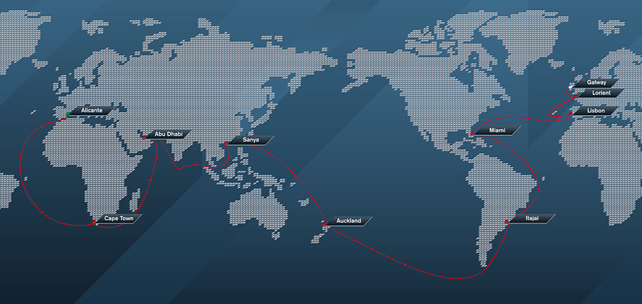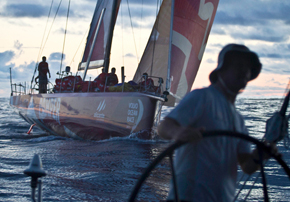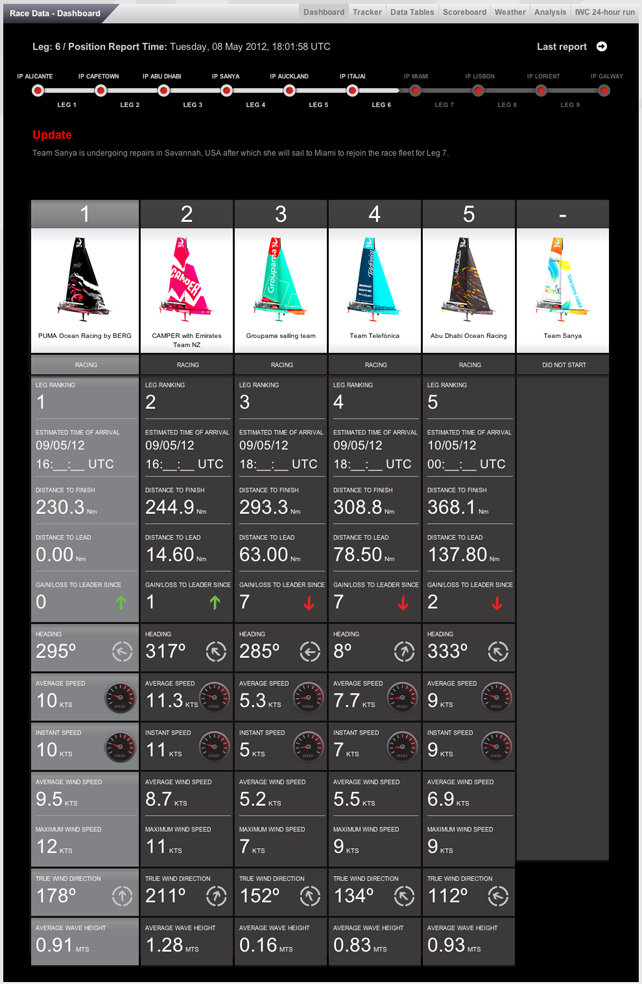The infrequent Volvo Ocean Race features unfamiliar athletes with skills you won't understand on expensive boats in the middle of nowhere. You won't be able to look away. Seriously.

The Volvo Ocean Race practically dares you to give a damn.
It involves the niche-est of niche sports (round-the-world yacht racing) where the majority of the action takes place in the middle of nowhere (the middle of the ocean), carried out by athletes you've never heard of (quick, name another world-class sailor other than Dennis Conner), on a handful of multi-million-dollar boats ($10 million or so to build), competing in a single race that's longer than most sports seasons (nine months) and occurs almost as infrequently as the Olympic Games (every three years). Sounds as irresistible as Christopher Cross.


And yet the Volvo Ocean Race, which arrived Wednesday in Miami for a 10-day stopover, is using technology cleverly to outmaneuver those shortcomings. Its website is focused on bridging the distance--physical and otherwise--between spectators and the action in ways that other sports could learn from.
Start with the breathtaking on-board video, like the clip below of a wave engulfing the Telefonica boat. The clip went viral (nearly 500,000 views) after fans shared and embedded it everywhere. Unlike sports leagues that are restricted by various broadcast contracts and often wary of rocking the corporate boat, this nautical marathon embraces social media as much as any sport.
[youtube UrKQgJykdO4]
In addition to the 11-person sailing crew, each boat has a media crew member. He shoots photos and video and records audio dispatches, chronicling the grueling work of sailing 24 hours a day: the four-hour shifts on deck; the extreme weather, from snow storms near South Africa to brutal heat during multiple equatorial crossings; the three or so weeks at sea on each of the nine legs, during which sailors consume around 5,000 calories a day and still lose 20 or so pounds. "I don’t think another sport puts a journalist at the heart of the sporting action," says Kevin Fylan, who covered sports for Reuters and works as editorial chief for the race site. "They’re there to tell the story."
In the 1980s, sailboats reported their location once a week. (Try following that race). Today's media crew members file continuously, and Fylan's team pieces together dispatches from the different boats to weave a beautifully shot narrative of the action:
[youtube mdGH9fO4A5U]
The Volvo Ocean Race staff has created a number of nifty tools to translate reams of data into meaningful information for fans. The race tracker showed the boats' real-time progress from Itajai, Brazil, to Miami the past few weeks and is loaded with all sorts of bells and whistles. A sliding toolbar traces each boat's path, revealing its different routes in pursuit of the best wind. A geo-content button displays icons for photos, audio, or video posted en route. A spherical view shows a global map, conveying the enormity of the 39,000-nautical-mile circumnavigation. A digital ruler measures the distance between boats. On Wednesday, it showed just five nautical miles separating first-place Puma (led by skipper Ken Read) and second-place Camper (led by skipper Chris Nicholson), a nail-biting finish. (Now you know two more world-class sailors.)
![]()
"We're able to see this race and learn more about the environment than before--the wave height, wind speed, boat speed, the angle of the keel," says Marion Brennan, the race's online chief for the past decade. "The most rabid racing fans want this. We have to find the balance--how much is too much. We don't want to turn off people new to the sport."
This year's race has provided plenty of drama to draw in newbies. The boats set sail last November from Alicante, Spain, heading for Cape Town, and within the first 10 hours two vessels were badly damaged. A boat repair team immediately hopped a plane to South Africa. A 100-foot mast had to be flown in as well. Team Telefonica, however, "took off like Usain Bolt," says Fylan. It won the first three legs, racking up a big points lead. Since then, three other competitors have gradually made up ground through the in-port racing competitions and the other legs. With the conclusion of leg six in Miami, the competition is suddenly a three- and perhaps a four-boat race.

It's exciting stuff. No wonder pageviews on the site and media coverage have already matched the levels for the entire race last time. Following the boats between Brazil and the U.S., it was hard not to imagine how these various tools could be applied to the basketball or hockey playoffs or the baseball season. A tracker you could position to show the position of players or the ball or puck on any given play or throughout the game? Hope the NBA, NHL, and MLB are watching--and willing to test the waters.
Follow Chuck Salter and Fast Company on Twitter.
[Image: Volvo Ocean Race]